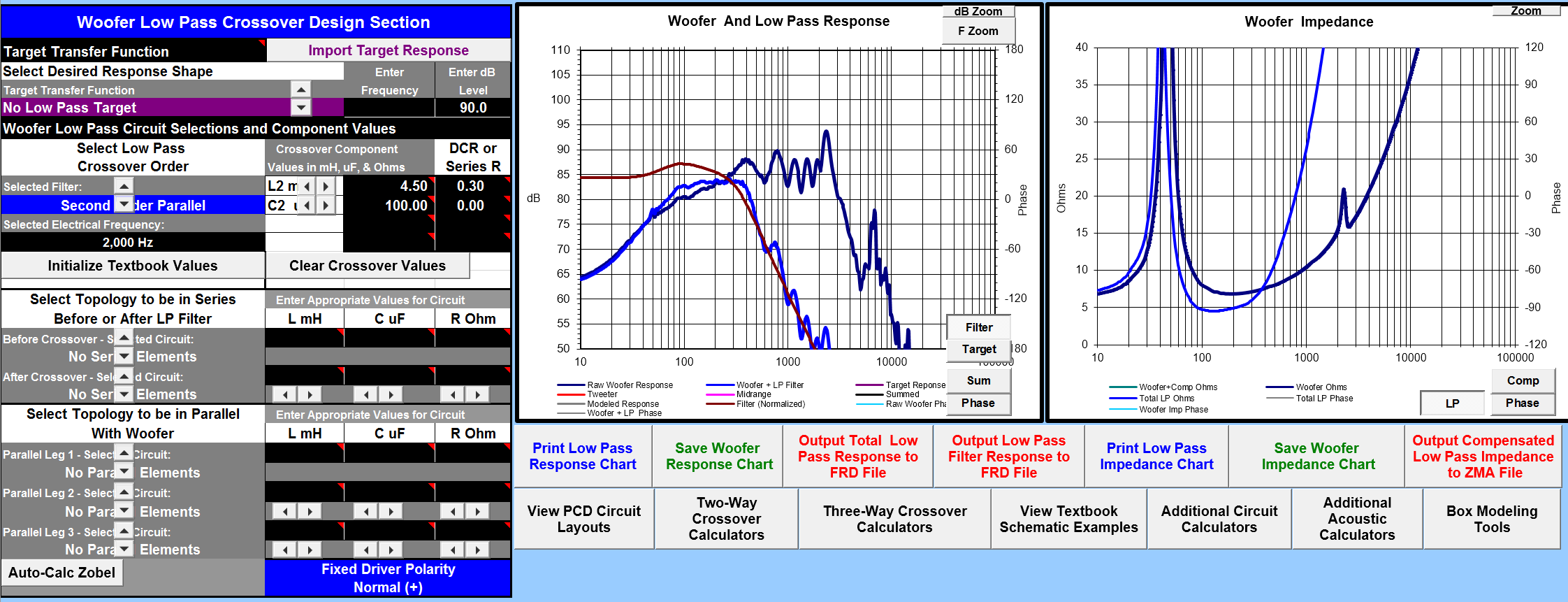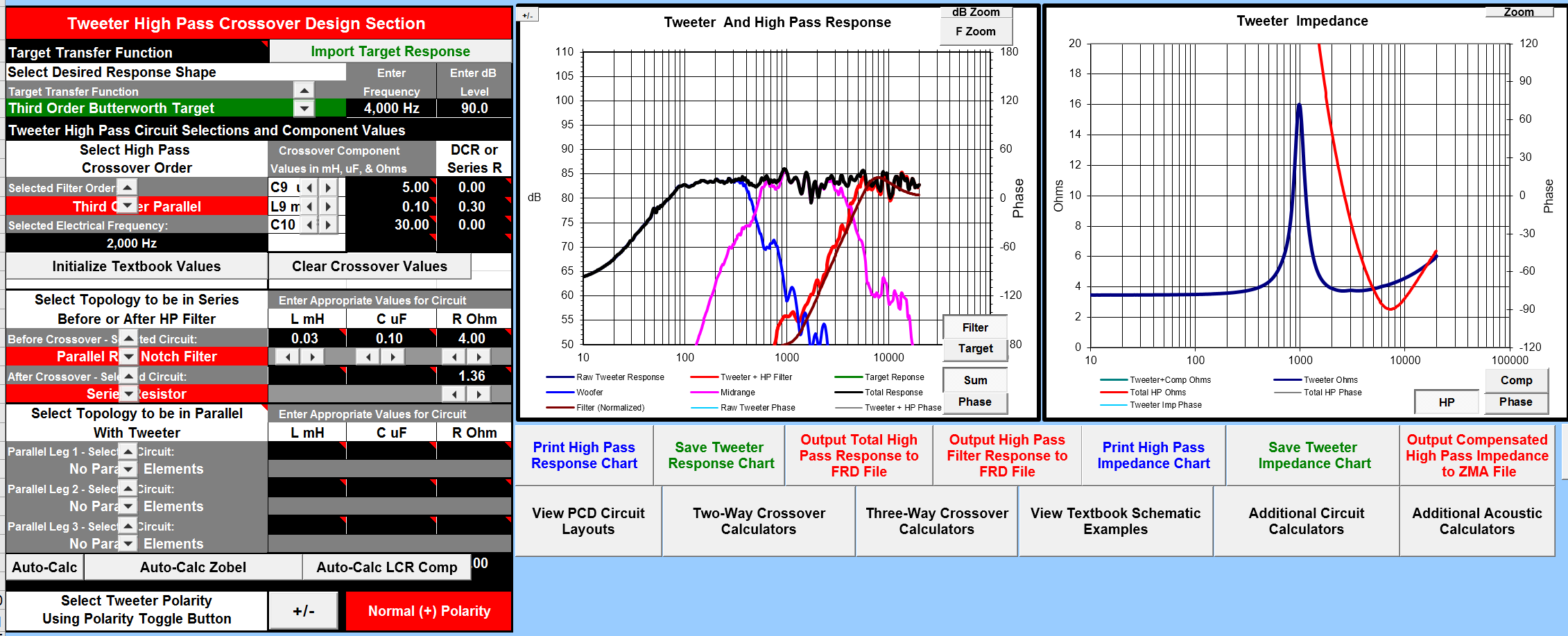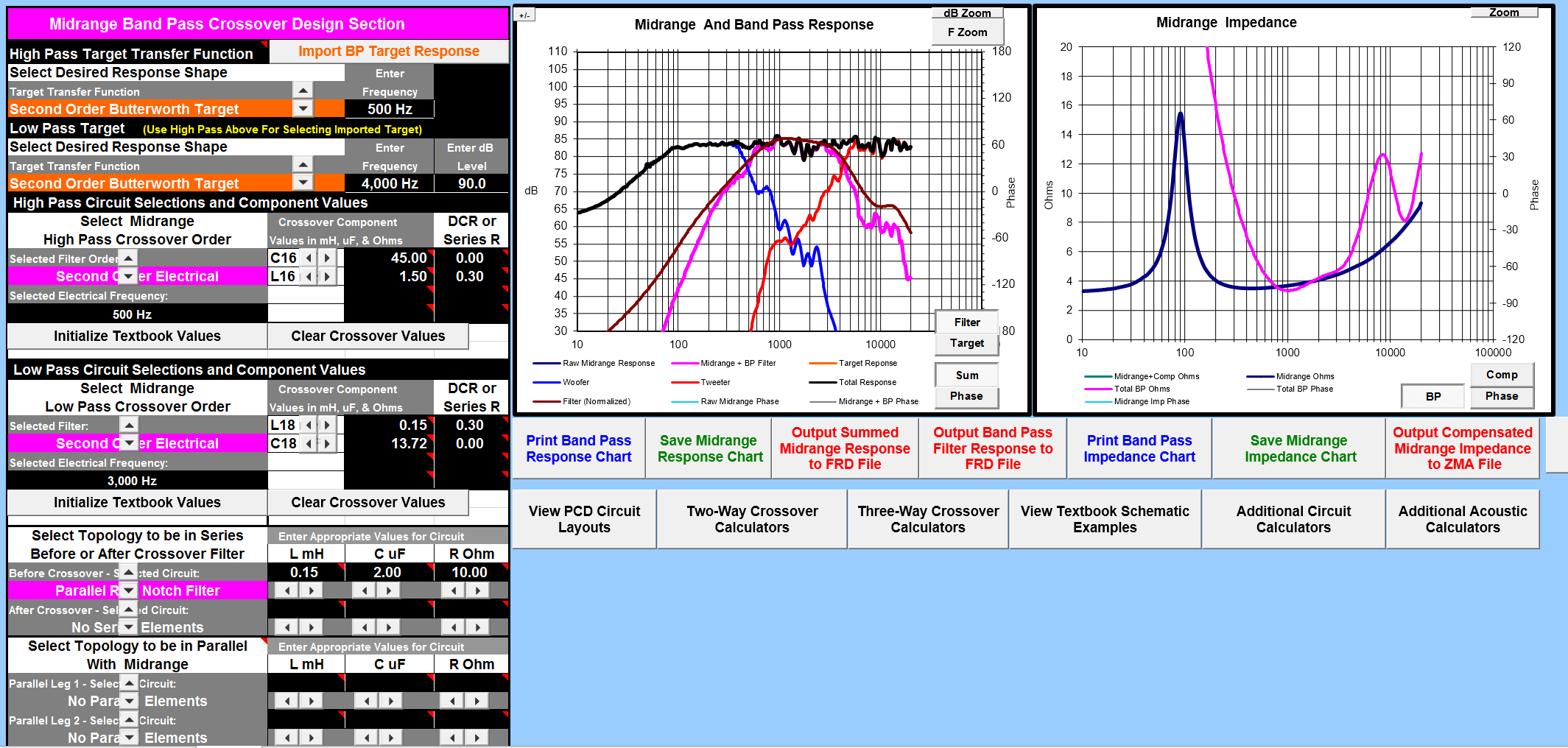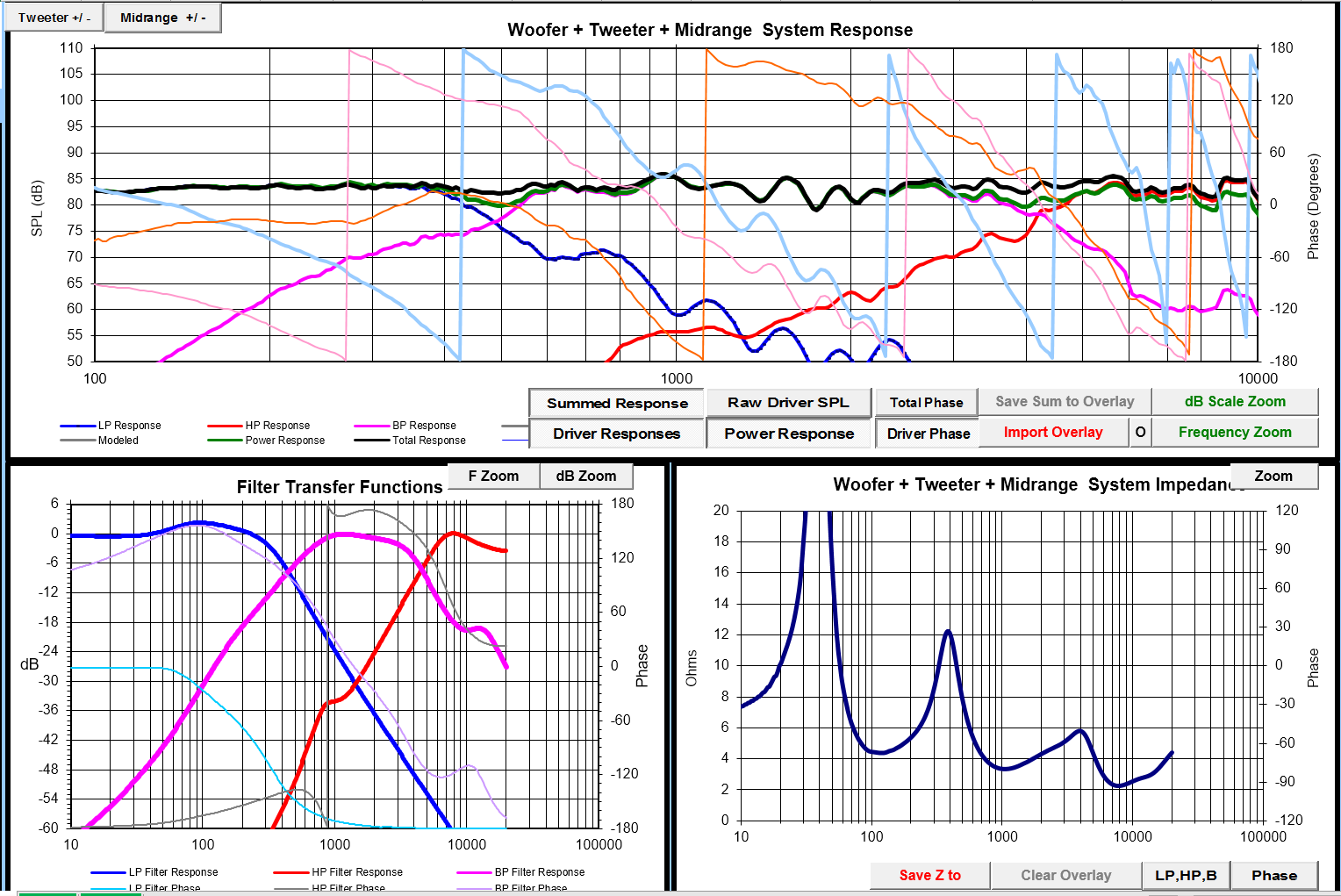Site Links
Howdy, Stranger!
It looks like you're new here. If you want to get involved, click one of these buttons!
Quick Links
Categories
In this Discussion
Who's Online (0)
Impedance Issue
I am having an issue with the impedance dropping down to 2 ohms. Is there anything I can do to raise the impedance? I am planning to re-do the crossover in any case, but this is the one I could get close to a flattish response, but can't get the impedance up.







Comments
https://drive.google.com/open?id=0B2bbY-YB6ikpMmlvVTcydG9PRU0
The mid and the tweeter may have a bit too much overlap. The soft roll off makes it look like they are in parallel and the Z will drop.
Even though the mid has a peak, in its own impedance at thise frequencies, the total Z will be lower than the lowest (tweeter).
I would re-think whats going on. I wonder, too what the Z phase is doing.
Or, leave it. If its a 4 ohm nom speaker, 2 ohm dips are common. The Wilson Alexx drops to 1.6R at 2800... Not that that is a great example, but commercial companies will not worry about dipping too low on a 4 ohm speaker.
One last note: Despite it beibg the tweeter, that load will still draw quite a bit of power at moderate levels and cause power compression. Mind the resostors in both the tweeter and midrange circuits. They may get toasty at suprisingly low levels.
I'll beef up the resistors
Lol listening to SRV at Blues Club levels (I typically listen fairly soft, but like to push the designs to see how they fare) when I see magic smoke start to come from the back of one speaker (the side he was soloing on...X-overs were mounted to thw back). I dived for the amp power button, too late... the resistor was burned black and when I cut it out measured 1.2K insted of 5.6R.
So went 21 years of never blowing a speaker or circuit.
A 12 watter works dandy, though it still can get too hot too touch at those levels.
It seems like splitting hairs, but 2.7R vs 2.1R is quite a bit if difference (30% ish) when that low to begin with.
Look at the Z data in the tabs of PCD, you will get a better idra of real numbers there, too.
Question: during a few of the earlier iterations, I could get the woofer and mid to blend, but the tweeter / mid had quite a ragged response - I could also get the phase to overlap or get very close between the mid and tweeter around the crossover point and the impedance above 4ohm, but could not get rid of the wriggles in the FR. This crossover which I posted was the smoothest I could get the FR and reduce the ripples in the FR, but the impedance fell. How critical are the wriggles in the FR (5bd+) in the tweeter region?
I am not looking for a super clean response, but how much should I obsess over it? I think the ripples are due to the box / baffle effect
I would have liked to use XSim on this one as the wiggles make it hard to use PCD. I don't like using a lot of parts so I listen before trying to flatten with more parts